Table of Contents
- Link insertions are a scalable SEO tactic ideal for sites with existing authority and quality content.
- Best used to enhance existing posts, resource lists, or roundups with contextually relevant backlinks.
- Prioritize relevance, authority, and traffic metrics when identifying insertion opportunities.
- Effective email outreach should be personalized, value–driven, and include a clear, specific ask.
- Use tools like Ahrefs for keyword research, target vetting, and BuzzStream for email outreach.
Link building is a fundamental part of a sound SEO strategy.
But, each link building strategy and tactic has its place depending on the size of your site or company and your goals.
For established sites, link insertions are a valuable tactic to add to a white hat link building playbook. But I’ve found that too often, the tactic fails due to lazy email outreach, shady paid insertions, and mismatched content.
In this deep dive, I explore the effective—yet often misused—tactic of link insertions. I’ll show you everything from identifying a target site for your link insertion to crafting a highly converting email.

What Are Link Insertions?
Link insertions are a common link building tactic of adding a link to an existing article. According to a recent study from uSERP, link insertions are used about 10% of the time in link builder’s marketing mix, right behind 13% guest posting.
This tactic typically involves contacting a site (author, webmaster, content creator) and requesting that they add your link to an already published article.
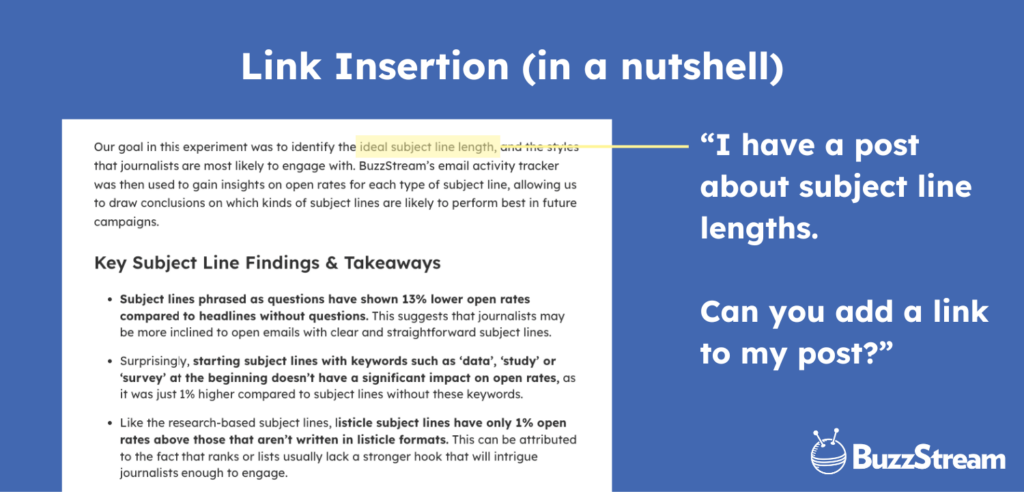
Although there is some overlap here, we can categorize link insertion into three buckets: within an article, within a list or roundup post, and within a resource list.
Article link insertions are the most straightforward and commonly used when discussing link insertions. This post you are reading (right now!) is an example of an article link insertion target.
A list or roundup would be an article that lists and/or reviews multiple sites, products, tools, etc. An example of this type of post is our SEO extensions post.
Lastly, a resource list link insertion, where you recommend adding a link to an existing list. An example of a resource list would be this list of exercise resources for seniors.
This practice is also called resource list building, but technically, you ask someone to insert a link into an existing post.
What Is The Difference Between Link Insertion And Guest Posting?
Link insertion and guest posting are similar, but the main difference is that you write an entire article for the guest posting tactic.
With insertion, you are weaving your link into an existing article. With guest posting, you’re the author, creating fresh, high-quality content for another site.
Use guest posting if you don’t have as much content on your site to pitch. Use link insertions if you have great content that would work well in other external posts to make them more valuable.
Link Insertion vs Broken Link Building?
The difference between link insertion and broken link building lies in the name “broken link.” With broken link building, you are targeting a post with a broken link and suggesting a replacement for the link.
So, technically, broken link building is a type of insertion, but link insertion isn’t broken link building.
Use broken link building when you know there is a broken link to replace.
Who Are They Best For?
Inserting a link works best for small to large sites with established authority already. If your site is brand new, making the case to link to you will be easier if you have high-quality content.
If you start from scratch, convincing someone to insert a link to your site will be challenging because it may be seen as less valuable—especially from an SEO perspective.
For brand-new sites with no content, guest posting is a better way to get started with link building. Check out our list of guest posting sites.
If done well, link insertions are one of the easiest and most effective ways to get high-quality, relevant links.
It’s easier than most link building tactics because it doesn’t require writing a new article or guest post on an external site, making this inherently more scalable.
Link insertions on a high-quality, relevant site can help improve your site’s ranking and ranking ability by boosting your site’s authority.
A nice byproduct of inserting a link onto a popular, high-trafficked post is that it can direct some of that traffic to your site.
How to Find Link Insertion Targets in 5 Steps
First and foremost, the strategy behind finding sites for link insertion hinges on finding quality, relevant sites.
Here are the steps to take for identifying and qualifying link insertion targets:
1. Set Some Goals
Your goals will dictate your entire strategy.
You can do link insertion in two ways: pitch your homepage or an asset you’ve already created, such as an ultimate guide post or helpful calculator tool.
For example, BuzzStream created a 6,000-word “complete guide” to HARO outreach. So, we could use this as our link to insert. Using a specific post would help guide our strategy since we know we want to rank.
However, if we want to get homepage links, we may set out to find posts on the web that list link building tools but don’t include Buzzstream.
2. Find Your Targets
Once you’ve identified your goals, you can start working on keywords to find quality, relevant link building opportunities.
Your target keywords for a homepage will likely be the ones that drive the most revenue for your business.
The target keywords for a specific tool or asset should take a slightly different approach. Find adjacent keywords to the main keywords you wish to rank for.
Use a tool like Ahrefs Keywords Explorer to find relevant keywords. Then look at the posts that are ranking for that keyword. Below is a snapshot of the SERP overview for “link building strategy.” These sites may be targets for insertion.
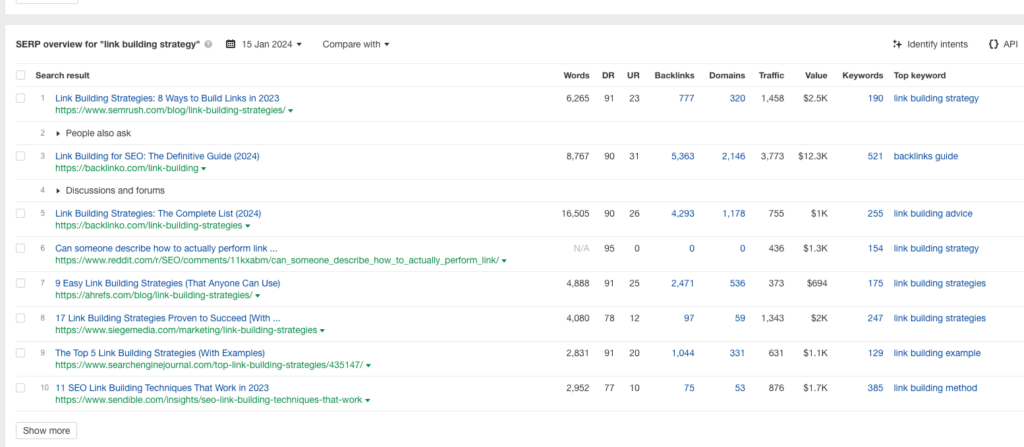
For instance, if BuzzStream wanted to pitch the HARO guide, keywords like “HARO” or “how to use haro” would find us sites trying to rank for HARO. So, we would go broader and choose a keyword like “link building tips” or “how to get press mentions.”
3. Search The Web
Once you have a list of keywords, you can search Google for sites that may provide opportunities for inserting a link.
Use search operators like Intitle and Inurl to uncover pages that talk about your target keywords.
For example, with our HARO guide, we can search for:
Inurl:link building tips
Intitle:link building tips
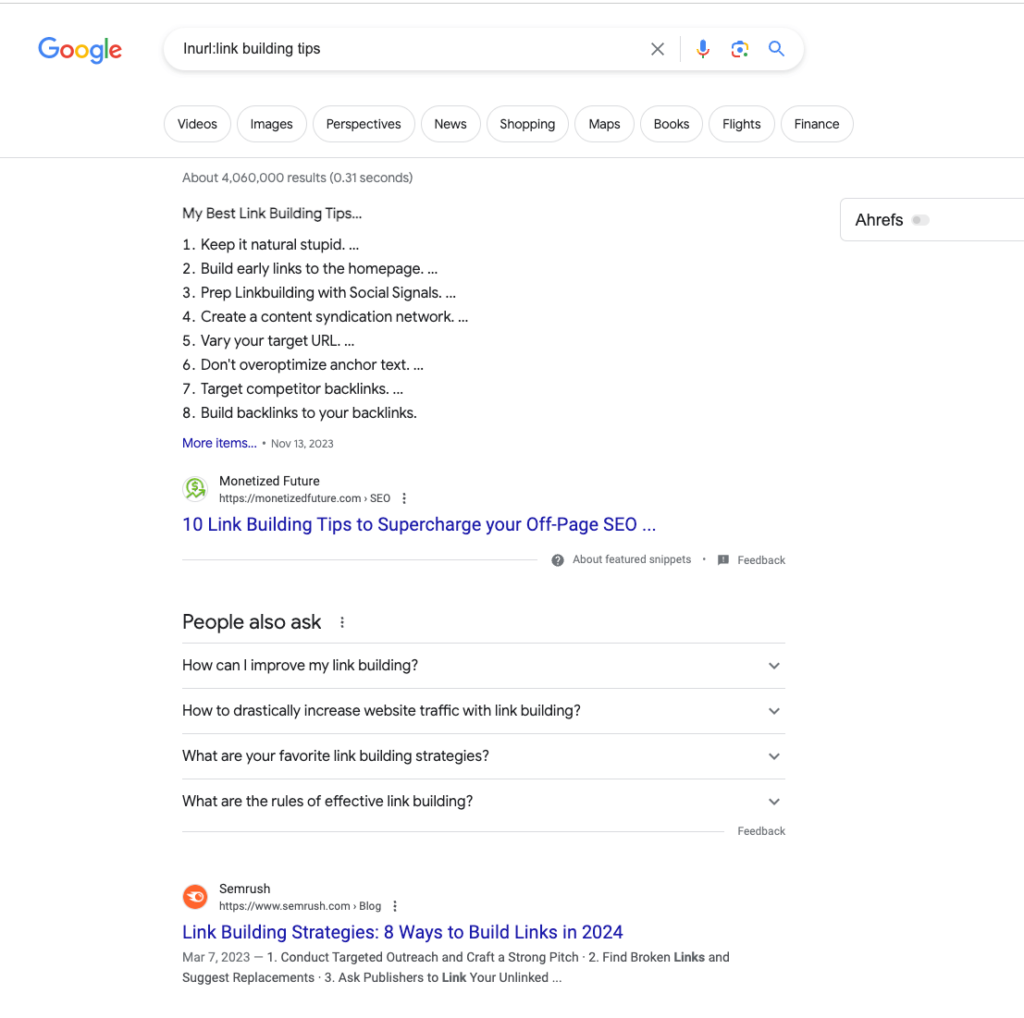
These search operators will find other pages that have included our keyword in the URL or title.
4. Assess Page Authority, Traffic & Links
Here comes the critical part. Only some sites are going to be high quality. You will likely throw away more sites than you want at first. That’s OK.
Quality sites for inserting links are similar to guidelines for qualifying a site for guest posting.
Here are some rough guidelines based on Ahrefs or Moz metrics.
- The site is topically relevant
- High Domain Rating or Domain Authority (above 65)
- High URL Rating or Page Authority (above 40)
- High organic site traffic (above 5k)
- High organic page traffic (above 1k)
- High number of Referring Domains or Linking Domains (above 50)
Note that some elements differ for each business. There may be a keyword with a lot of value for your business that doesn’t get much search traffic, so organic page traffic may not be as important to you.
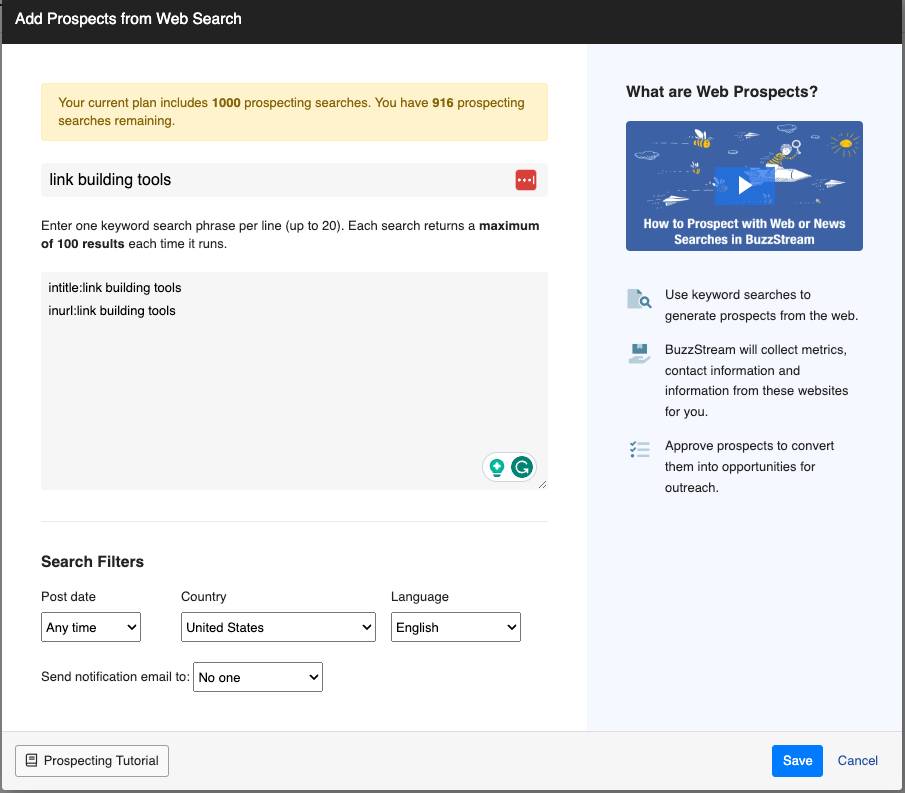
Once you have a list, you need to qualify each.
5. Assess the Fit
Read the article and find a natural fit for your link.
(You can also try a page search to see if you can find some target keyword phrases.)
Ensure these final things:
- Is the site a competitor of yours?
- Do they not link out to external sites? (Open the links and see if they are
- Are all of their external links nofollow?
If the answer is YES to any of these, it’s not a good fit.
Alternative: Competitor Analysis
You can lean on competitors if you need help finding opportunities or identifying keywords.
You can use Ahrefs’ Site Explorer to see competitor’s pages with many referring domains. See if there are any opportunities to pitch your own content for links.
For a more detailed approach, use Ahrefs’ Competitive Analysis tool within Site Explorer to see where they get links, but you are not. For example, in the image below, you can see sites linking to BuzzStream’s competitors but not BuzzStream. These sites could become opportunities for insertion outreach.
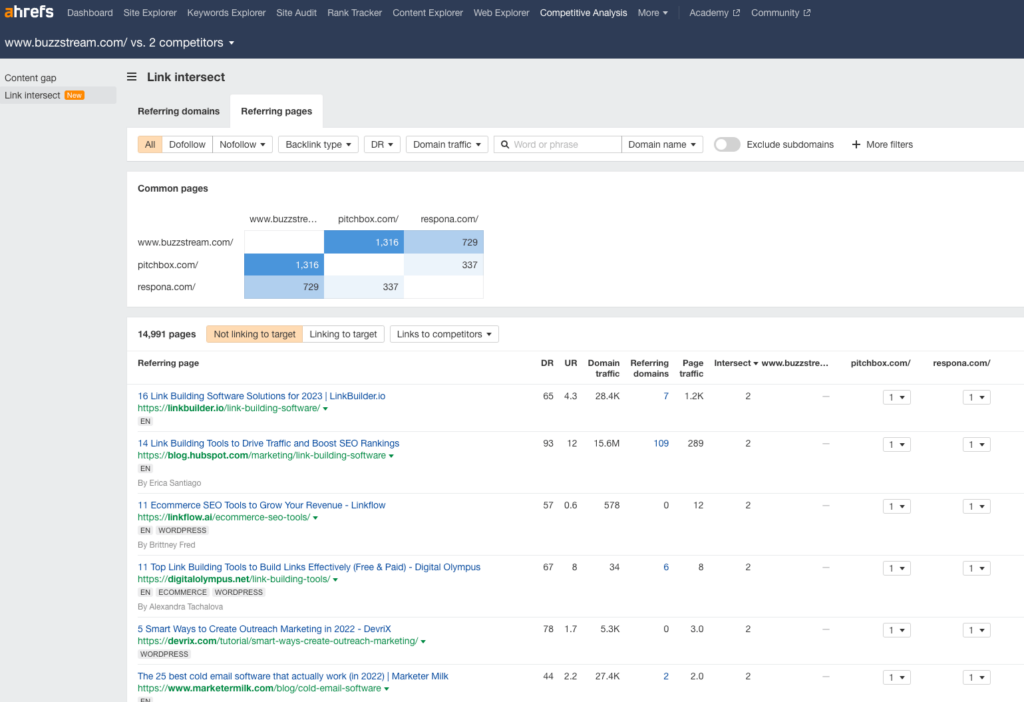
Then, build something better and pitch it to the same places.
How To Craft a Link Insertion Outreach Email
Once you’ve identified the link you wish to pitch and to whom, you move into the outreach phase.
Contact information is relatively easy to find if you know where to look. I recommend checking out our post on finding someone’s email address for the whole run down.
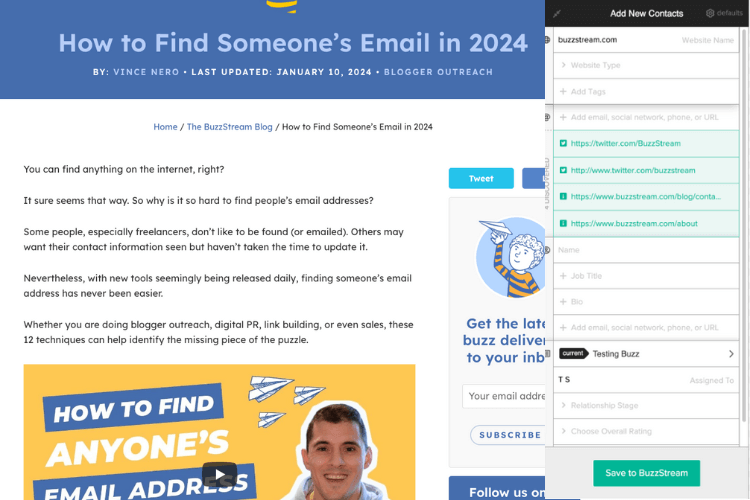
Link insertion outreach is similar to other outreach. You want to introduce yourself, make a clear connection, and explain the value your target will receive from inserting your link.
Usually, the value is that you are making their post more valuable for their readers.
You can start crafting your email if you genuinely believe your link is valuable.
The basic structure is as follows:
- Tell them about your target post they wrote and why you like it.
- Tell them about your post.
- Tell them why including a link to your post would benefit them.
- Ask them to include a link to your post.
Here is an example of a very straightforward link insertion request:
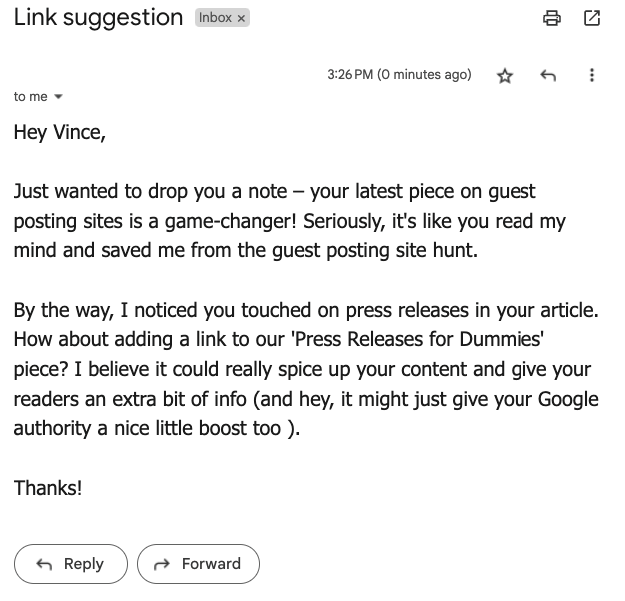
Here is another excellent example of a link insertion outreach email I’ve received for my digital PR tools post:
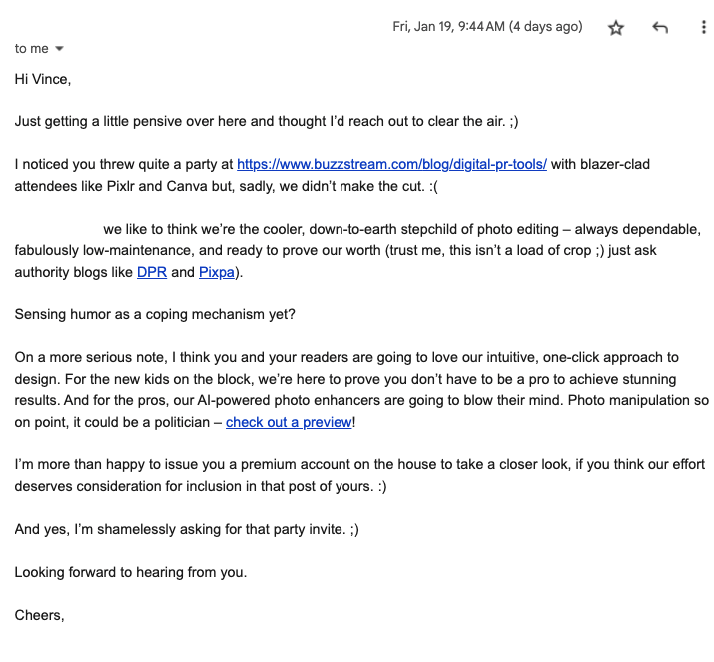
He went the extra mile to link to the post he was talking about because it was one I posted a while back, which is a great example of helping your prospect with your request.
Email Templates That You Can Use
Here are a few email templates that you can use in your outreach efforts. Copy and paste and then edit how you see fit.
Example 1 – Insert Into An Article
This example starts by making a connection and then personalizing a bit. Then you ask for the insertion.
Hi [Recipient’s First Name],
I recently read your article on [Topic] and was impressed by your [specific aspect]. It really resonated with me because [Provide a personal reason or connect with their argument].
I noticed you discussed [Topic] in your article, and our team has developed a comprehensive guide on [Related subtopic].
Would you be open to including a link to our guide in your article? It could offer valuable additional context for your readers and complement your already informative piece.
Please let me know!
One of the most important things to remember to do have a clear ask.
Example 2 – Insert Into An Existing Resource List
This example works because you are specifically telling them where in the article to place your link.
Hi [Recipient’s First Name],
I recently came across your resource page on [Topic]. Thanks for putting together such an excellent resource for [Topic users].
I wanted to reach out because we’ve put together an article on [Your Topic], where we cover [brief description of your post].
I thought you might consider adding a link to it in your resource list. It would make a great addition under [Specific section].
Please let me know what you think!
If the resource list is really old or hard to find on the site, you can also include a link to the resource list so that your prospect knows exactly which article you are referring to.
Example 3 – Insert Into a Roundup/List Post
For this email, you are passively offering a link swap. You offer a free trial of a tool or software is always helpful, but never make it a requirement. If the user doesn’t want to add your link, you can’t force them to in exchange for a free trial.
Hi [Recipient’s First Name],
I enjoyed your recent article on [Article Title] and its comprehensive list of [Topic]. I couldn’t help but notice that [Your Site/Product] was missing.
[Your Site/Product] offers unique features like [list one or two key features] that are beneficial for [target audience or industry].
Would you consider including [Your Site/Product] in your list?
[If applicable: “I’m more than happy to arrange a free trial for your consideration.”]
Please let me know what you think!
Remember, the name of the game with outreach is to personalize as much as possible.

 End-to-end outreach workflow
End-to-end outreach workflow



 Check out the BuzzStream Podcast
Check out the BuzzStream Podcast







